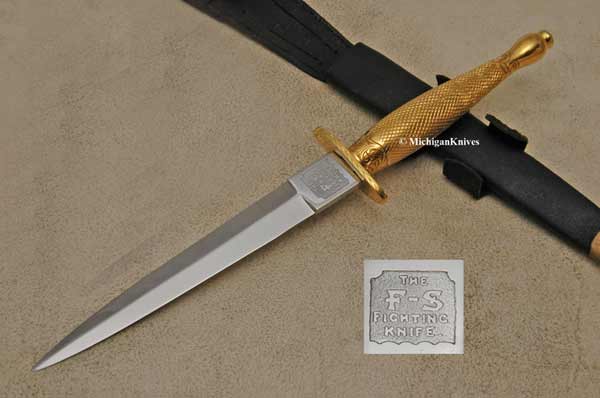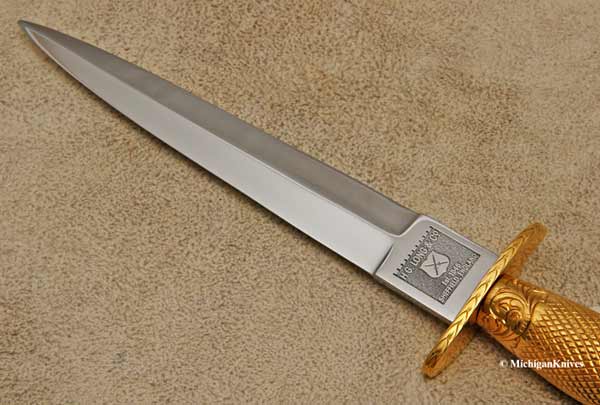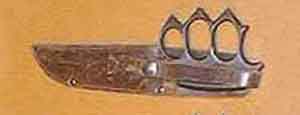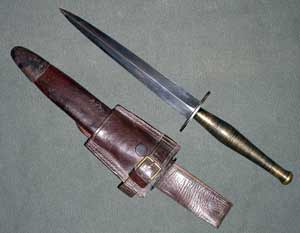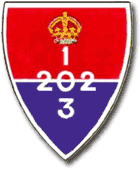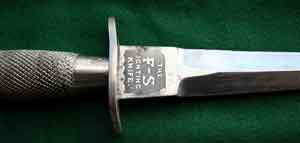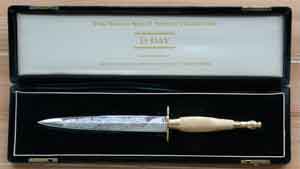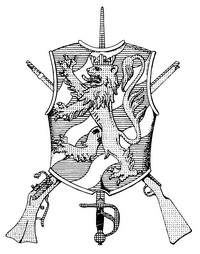|
|
Fighting knives used by British commandos and SOE during WW2 |
|
|
|
Commando knives, Postwar production. |
|
Text and pictures by
Olof Janson unless otherwise stated. |
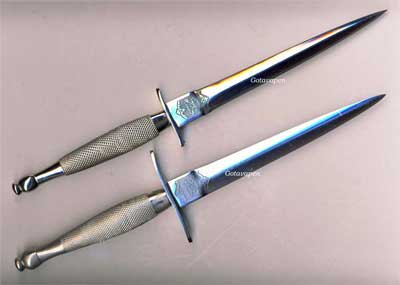 |
Special
honour should be given to:
-
Robert Wilkinson-Latham,
-
Ron Flook,
- Roy Shadbolt.
Who
have given me much assistance.
On the picture to the left:
Post-war Wilkinson 1st
Pattern with 2" and 3" crossguards
|
updated
2013-03-15
Wilkinson Sword Company.
1945 - September 2005.
All
Wilkinson Sword Company
black 3rd Pattern Commando knives with NO F-S markings
were made after WW2,
between 1945 and 1952.
|
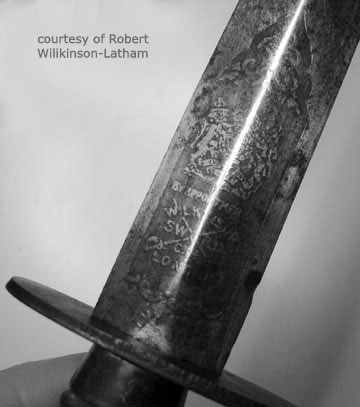 |
|
1948
WSC started to offer nickel plated and all black Pattern 3 for commercial
sale. Some knives were also offered as presentation to serving soldiers from
Norway, Holland and UK. |
Wilkinson Sword Company
standard
3rd Pattern all black Commando knife.
|
 |
 |
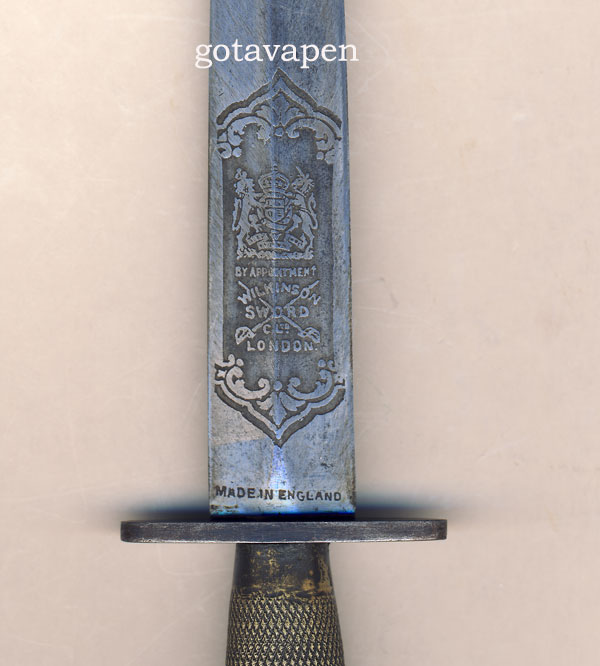 |
This is a late wartime knife of the Masonic Etch
type made during the war and in still stock still at Pall Mall in 1945.
It was sold (private sale) after the war end
probably 1945/1947. |
|
You can tell as the 'Made in England' etch has
been put on AFTER the logo etch. You can see this because it is not centre and
slopes a bit yet the logo is straight and true.
This was done after 1945 because of regulations
about country of manufacture being marked on good, especially importing to US.
Wilkinsons started marking heir goods (razors)
in the 1920's to conform to US requirements and started putting Made in England
on FS Knives in 1945 for non contract/Government Order knives sold to US
personal or shipped to the States. |
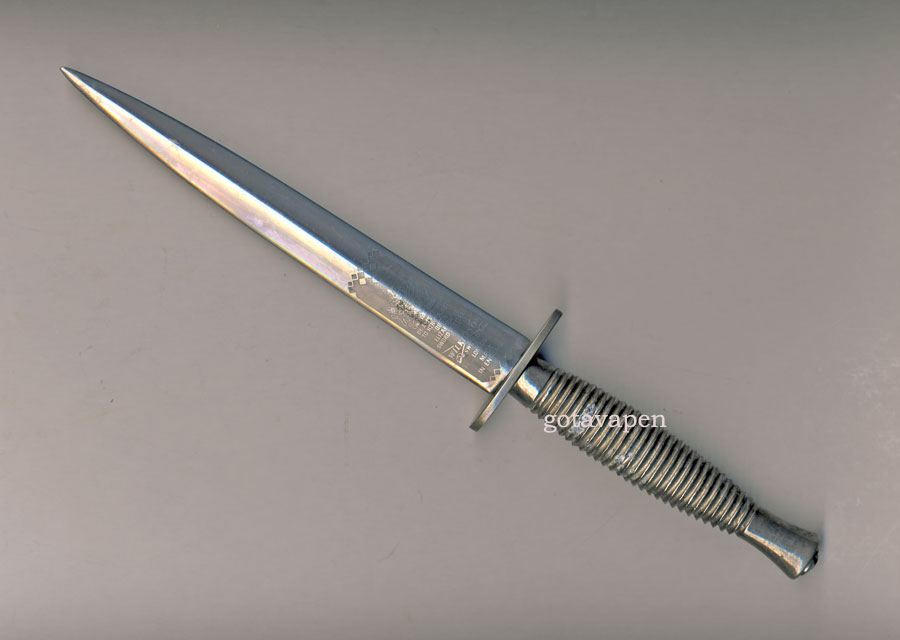 |
|
Wilkinson Sword Company
standard 3rd Pattern white Commando knife. |
Commando knives for
Commercial purpose &
display.
"HAND FORGED
BY TOM BEASLEY THE FAMOUS SWORD SMITH"
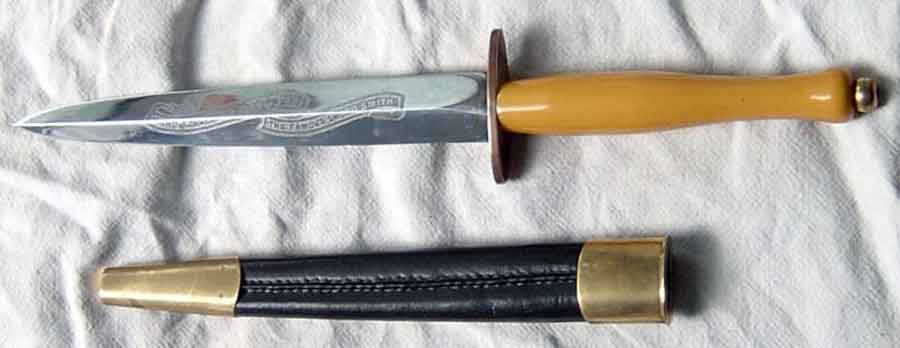 |
 |
According to
Robert Wilkinson Latham Wilkinson Sword Company made 500 special “Commando”
knives were made for window and showroom display. Wilkinson had dropped the FS
for their post war knives as the initials meant little and Commando was an
evocative name!
Despite popular
belief these knives were never meant as presentation gifts. The presentation
gifts were standard production knives and scabbards.
The
blade was etched on one side with “Commando Fighting Knife World 1939-1945” in a
shield with below it near the cross guard the Wilkinson Sword trade mark.
The grip
was made of smooth “ivorine” which is a nicer word for ivory imitation, made
from plastic. The cross guard was standard type as well as the blade.
The
scabbard was made of black
leather with gold or nickel plated mounts.
Sometimes this knife will be found with etching in three panels on the opposite side:
“Hand forged by Tom Beasley the famous
sword smith of Stalingrad sword fame”
or in two panels only:
“Hand forged by Tom Beasley the famous
sword smith”
Tom
Beasley joined Wilkinsons on 8th May 1884 and spent the rest of his life with
the company forging blades for swords and knives. His special skill was forging
blades. He was very famous sword smith. He forged the blade of The Stalingrad
Sword in 1943. It this sword Jack Wilkinson holds in his hands on the picture.
This sword was presented by King George VI to Josef Stalin in honour of the
Russian troop’s defence of Stalingrad. Tom Beasley died in 1950, 90 years old.
Read
more here about the Stalingrad Sword |
|
The blade
etching:
Hand forged by
Tom Beasley the famous sword smith. (in 2 panels)
These
blades were most likely not forged by Tom Beasley, although this was written on
the blades. After his blade forging of the Stalingrad sword, he offered mental
and inspiring support for the wartime work force. |
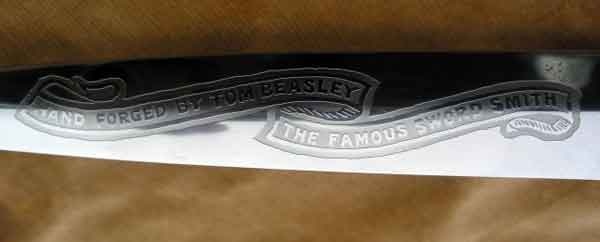 |
FOR OUTSTANDING SALESMANSHIP.
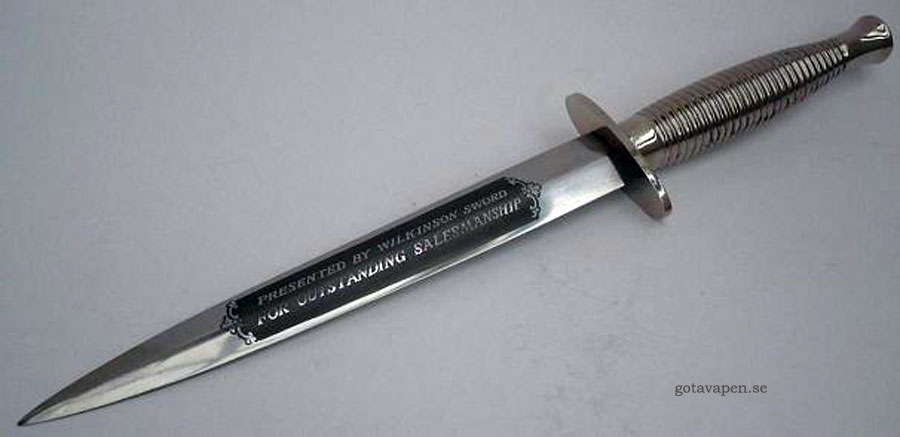 |
|
Robert Wilkinson-Latham told me
that 500 knives were made like this one. They were intended for display windows
and exhibitions. These knives were sent to qualified dealers. I remember such a
knife and similar sword at an exhibition in Gothenburg many years ago. |
FR693 Fighting knife
|
After
the war Wilkinsons received an order in 1964 from the Admiralty. These
knives are marked on the underside of the cross guard with ‘FR693’ and the
scabbards were marked with ‘FR271’. These knives were standard production all
black knives. According to Robert Wilkinson Latham who was Manager for the
company at that time Wilkinsons in Pall Mall at the time says that it was
about 100 knives.
There
are also reports of some knives of both WW2 2nd and 3rd
Pattern marked this way. These knives came complete with their boxes from
the MoD store.
According to Ron Flook
a small number of FR693 original knives have
appeared now complete with boxes.
|
 |
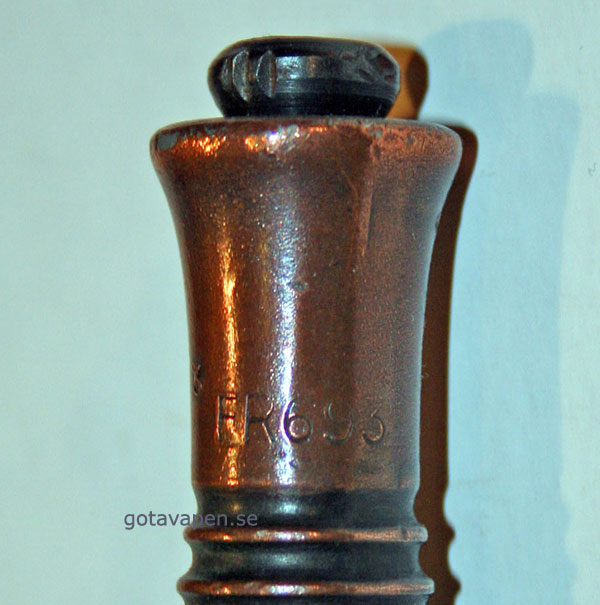 |
This is a
B2 marked, BSA produced knife from 1944-45 but also marked
FR693.
(Note the heavy blade.)
Note the pommel nut
is typical for Wilkinson and BSA.
The FR693
was an ADMIRALTY NUMBER.
(Private collection) |
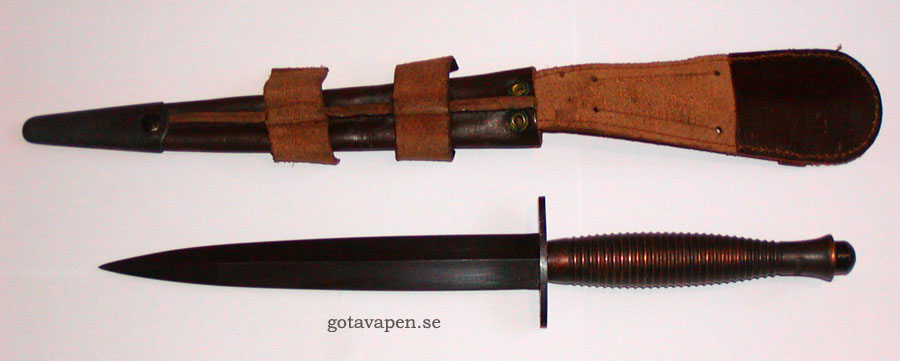 |
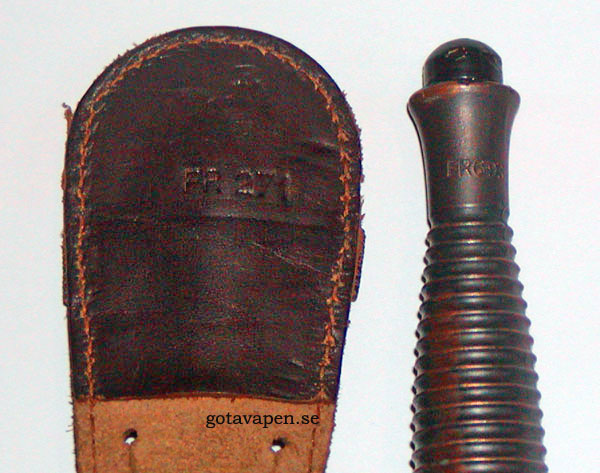 |
This is a
Sheffield produced knife from around 1954 of the
FR693-knife. Note the pommel nut of
large dome type.
Note
the stamp on the pommel and the scabbard!
(private collection) |
|
In 1964 Wilkinsons filled an
order from the Admiralty. |
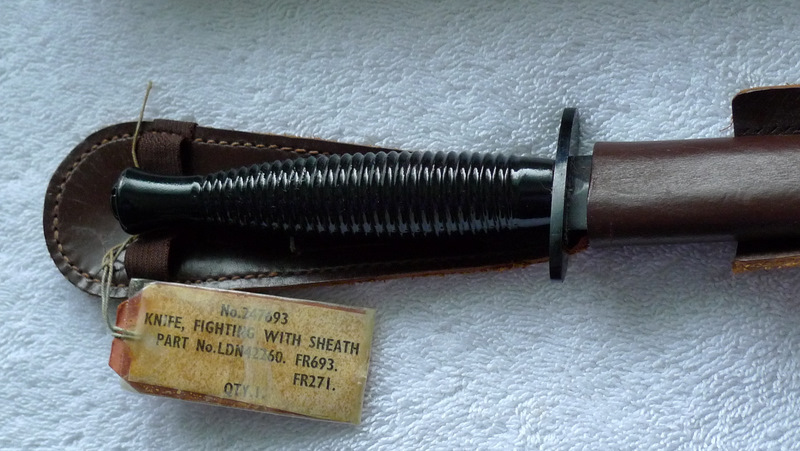 |
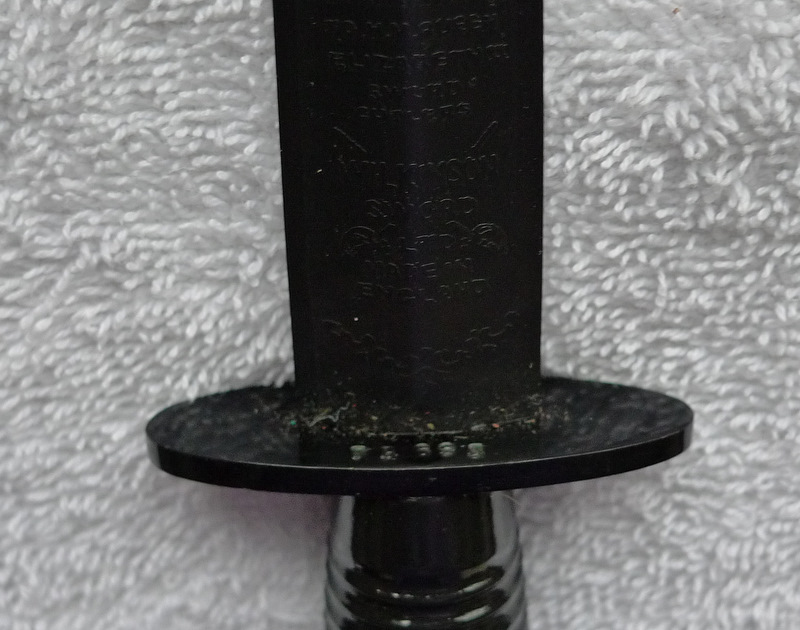
FR693 marked on the cross guard and made by Wilkinson sword Ltd. |
More about FR693 here>>>
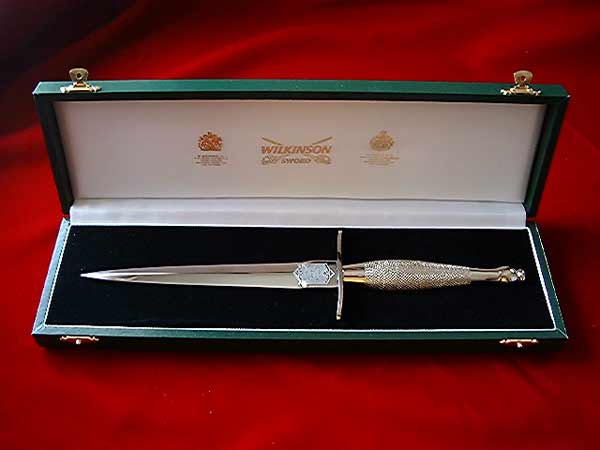 |
In the
1990's Wilkinsons were owned by a company called Warner Lambert.
F-S Fighting knife of the very 1st Pattern with 3 inches
S-shaped cross-guard made after 1990
The new owners
were persuaded by believing collectors of the existence of a 3 inches
cross-guard knife in 1940. They were drawn into what might be a myth.
They started to produce a new 1st Pattern knife with a 3” cross-guard
without any research in their own files and documents or even asking people
who could have known.
Robert
Wilkinson Latham opposed against it. He pointed out that there were no
proofs or solid facts that such a knife ever had existed, but they didn’t
care.
By producing
this knife they established that such a knife really had existed for sure!
|
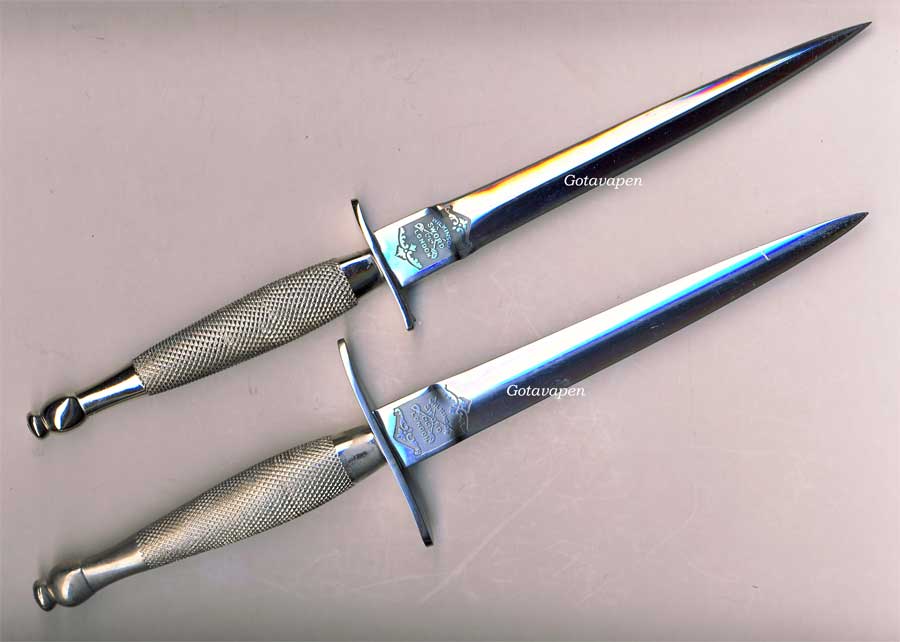
|
In the
end of 1980's, Wilkinson Sword
Company
(WSC)
issued a commemorative FS 1st Pattern knife
with 2 or 3 inches S-shaped cross guard and FS logo etching similar to those
made 1940-41. It was not intended to fool any expert collector. The blade
etching was modernised and Wilkinson Sword Company did not use the original plates for the etching.
The
cross guard was too thin and the pommel was too ball shaped,
however the blade was superb.
These 1st
Pattern F-S knives are the only WSC Commando knives with the F-S logotype
etching from their post war production.
These
recently produced knives can not be called copies, because they are made by the same
original company to
the original specifications, but they can easily be differentiated from the even more beautiful knives produced in the
beginning of WW2.
|
|
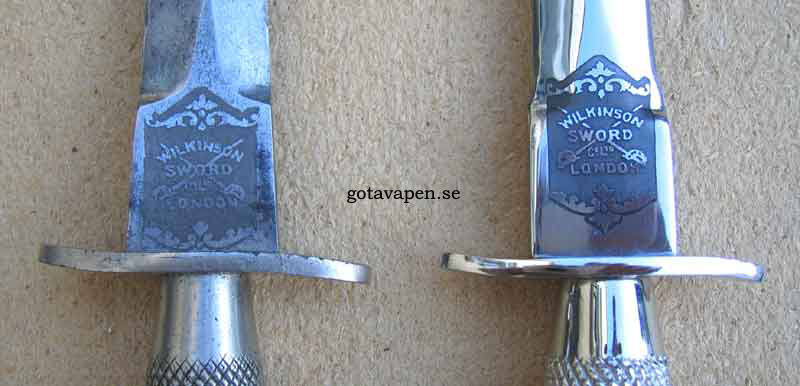 |
|
To the
left a WW2 1st Pattern F-S knife 1940-41 and to the right a 1st
Pattern knife from 1990. |
 |
|
This is another post war F-S
Fighting knife of the very 1st Pattern with 2 inches cross-guard.
This knife was made 1990. |
Wilkinson Sword Company Commando knife
without F-S markings.
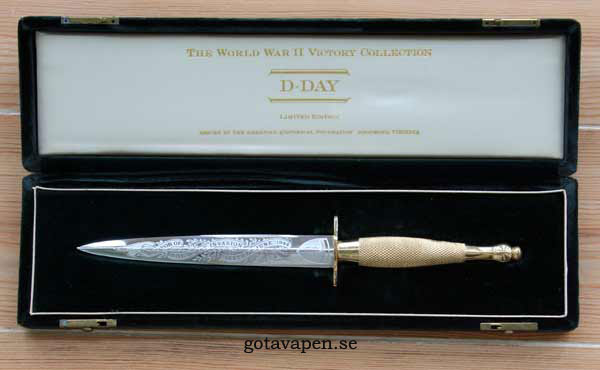 |
This is a
commemorative knife referring to D-Day
6th of June 1944.
It was made
1994.
Notice the typical shape of the blade
from Wilkinson Sword.
more pictures |
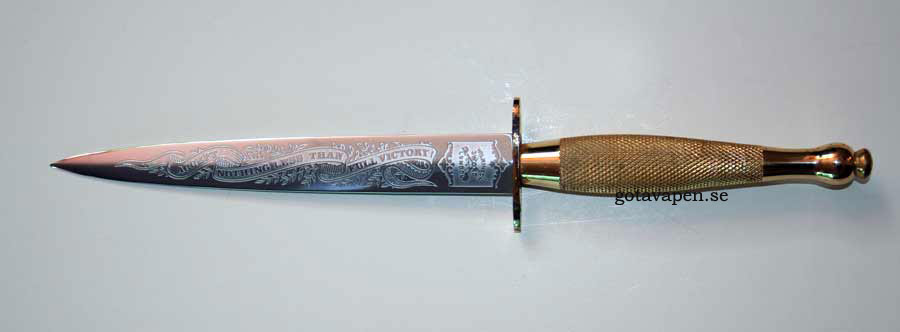 |
 |
|
Various
commemorative Fighting knives were made by WSC in the last 40 years. The knives
are suitably etched, adorned and presented in a case.
None of the these Commemorative
knives incorporated the original F-S etched logo except some special orders of
very limited series for special occasions.
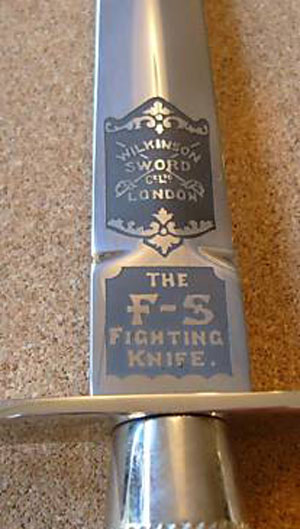
|
|
Wilkinson Sword made some Commando Commemorative knives.
The following WW2
Victory collection was made for the American Historical Foundation when
Robert Buerlein was president.
| Wilkinson Sword - War in Europe |
| 1 |
 |
D Day Invasion |
| 2 |
 |
Battle of the
Bulge |
| 3 |
 |
Battle of Rhineland
Remagen Bridge |
| 4 |
 |
The Desert War -- North Africa |
| 5 |
 |
The Italian Campaign -- Invasion of Italy |
| 6 |
 |
The V-E Day -- Victory
in Europe |
American Historical Foundation ordered
another
collection
for about the War in Pacific
made by H G Long, Sheffield.
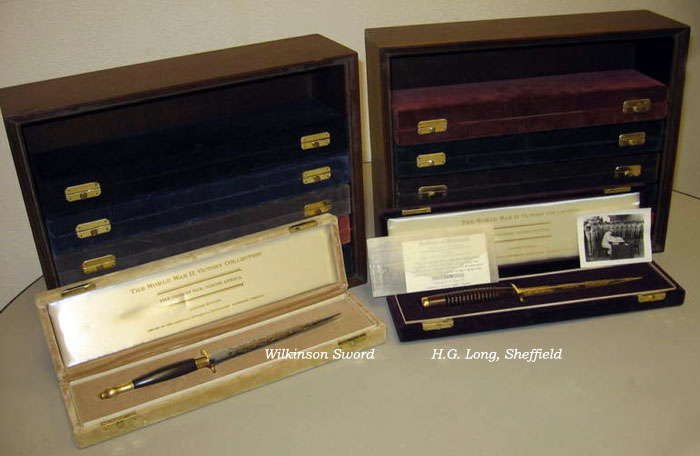
|
New WSC Logotype with the accession of Queen Elizabeth II.
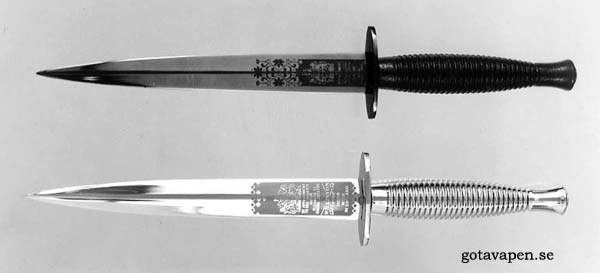 |
After
1952, Queen Elizabeth II entered the throne, Wilkinson changed the logo. It
now read
BY APPOINTMENT TO HER MAJESTY QUEEN ELISABETH II
These
Commando knives with fancy edging were made 1974
|
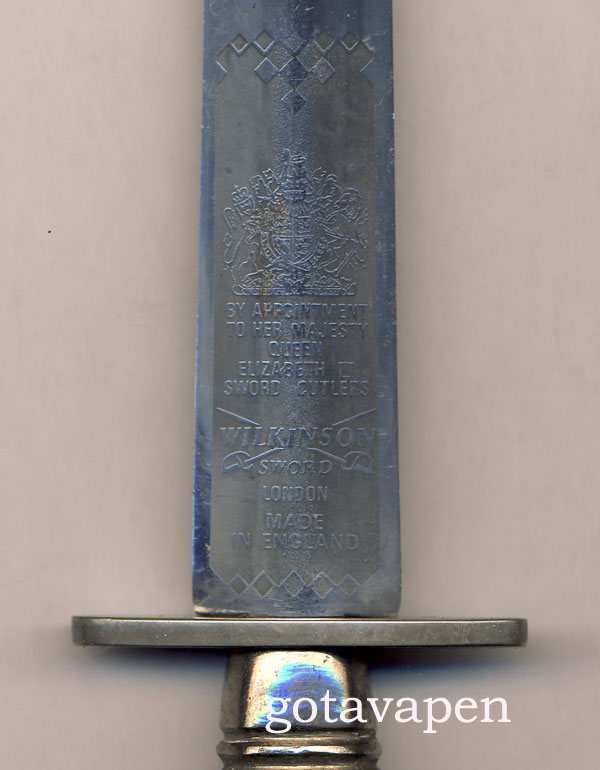 |
This
logotype was used for both nickel plated and black Commando knives until
1996 with minor graphic variations of the edges of the etchings.
|
 |
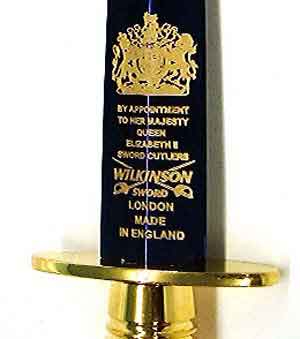 |
|
Logo above and to the right is screen
printed but also done in wax transfer. The old way at the same time.
Screen printed logotypes
were used from the 1980’s for some orders |
Next Logotype for WSC -
Laser Etching 2002.
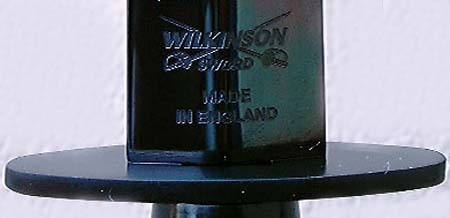 |
2002
Wilkinson Sword made a new logotype for their knives. Here it is - Laser
etched with the Wilkinson Sword logo
|
|
Wilkinson
Sword Co. produced these beautiful knives until September 2005, when they ceased
with the production of swords and knives.
Weyersberg,
Kirschbaum & Co (WKC) purchased in November 2005 the tools for the production.
See WKC futher down in
the text.
Pooley Sword follow nowadays the tradition in of producing high quality
F-S.

|
The Army Air Corps Helicopter Escape knife (HEK)
|
In
2001 Robert Poley of Pooley’s Flight Equipment Ltd had brought the idea forward
to the Army Air Corps to supply the pilots of the Apache helicopters with a
rescue knife based on Wilkinsons Commando knife.
They asked
for a FS knife, but with a very short, approx 2-3” blade. That had a black grip
and crosspiece, 3rd Pattern style, and a ground blade dipped in acid. The knife
could also be used after as a survival/fighting/general escape and evasion
knife.
Rodgers
submitted one finished but NOT blacked, Wilkinsons subittedtwo all black samples
to AAC Training.
When WSC
ceased to manufacture swords and knives in 2005, the idea to make such knives
was brought back by Pooley in 2008 and new samples were made. Pooley Sword Ltd
made six knives. Three were destroyed and three were returned when the project
was rejected in Sept. 2008.
|
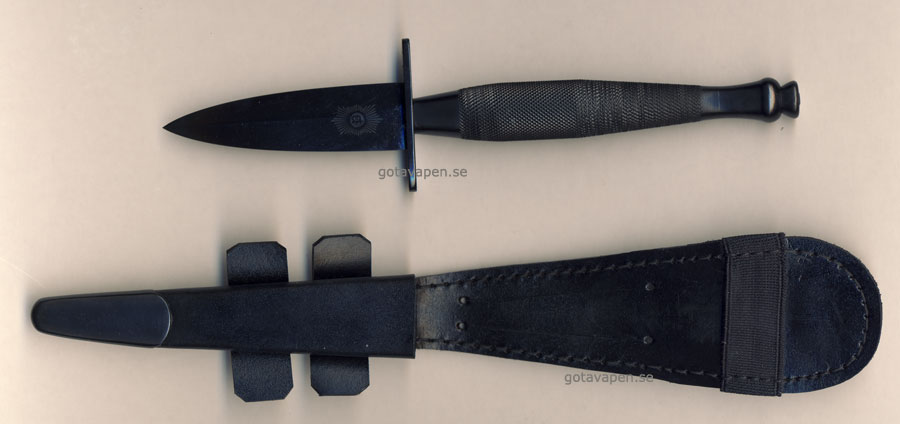 |
|
Army Air Corps
Helicopter Escape knife (HEK) made by Pooley Sword Ltd (one of three existing).
Private collection |
Special thanks
to Robert Wilkinson Latham
[Top
of the page]
|
Sheffield Post war production.
J. Adams Ltd, Sheffield.
John Nowill & Son.
|
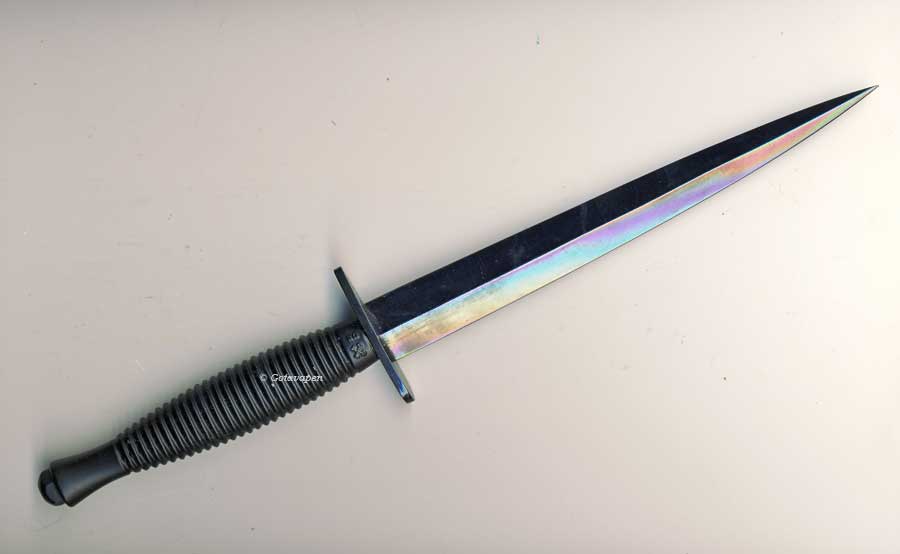 |
|
John Nowill & son
still produce Commando knives.
Nowadays the company is
owned by J. Adams Ltd, Sheffield.
All knives
produced by J.
Adams Ltd are 3rd
Pattern Commando knives. They are either all black or polished and plated.
The
scabbards are normally far to big for the knives. |
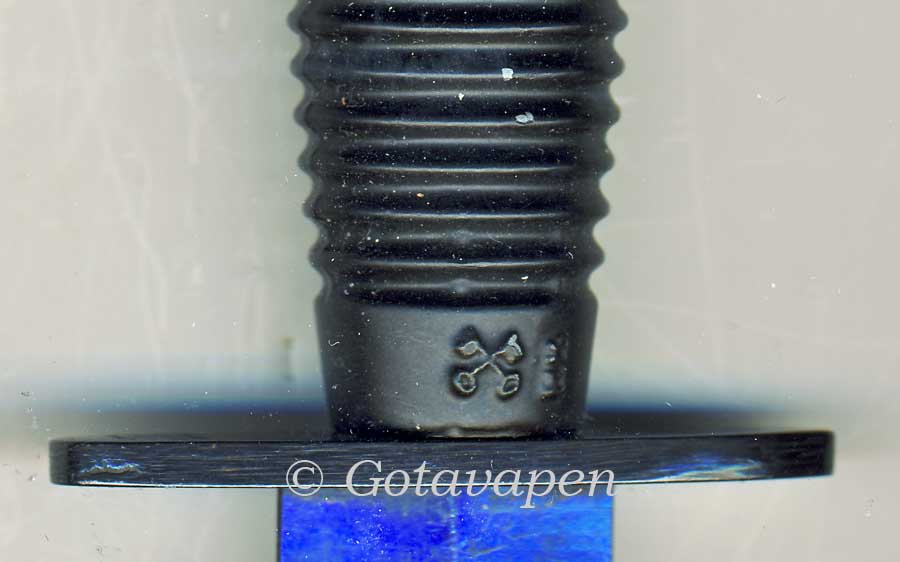 |
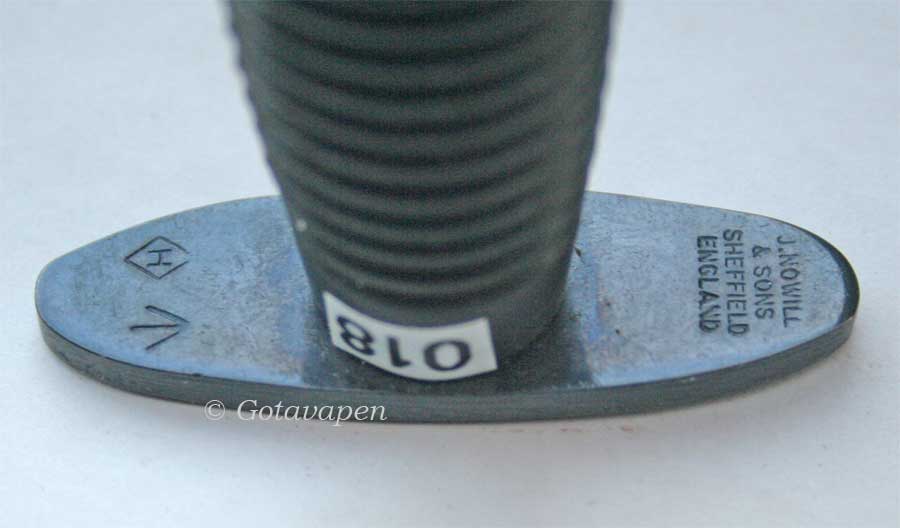 |
|
The cross-guard
of
John Nowill & Son.
Typical for this knife is its markings. The acceptance
broad arrow is placed on the cross-guard.
'H' inside a rectangle is the trademark for
F.E &
J.R.Hopkinson Ltd, established 14 June 1944, which was incorparated by
J. Adams Ltd. |
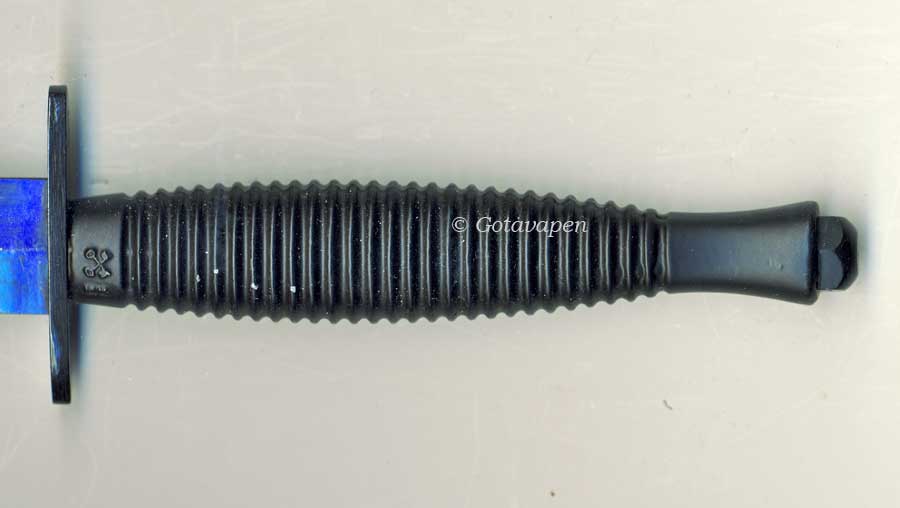 |
|
I have
visited the company in Sheffield.
The broad arrow is
stamped by the company itself on the cross guard.
The hilt is a 3rd Pattern,ring type and has two crossed
keys close to the cross-guard.
The trade
mark ‘Crossed Keys’ was acquired by John Nowill & Son 1842.
The Pommel nut is hexagonal. |
|
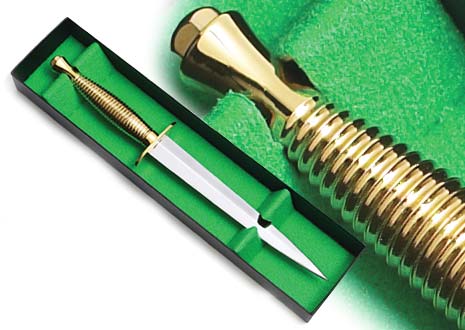 |
They
also make a 3rd Pattern with a Nickel plated blade and Gold
plated handle as presentation
3rd Pattern knife.
Note the hexagonal pommel nut. |
[Top
of the page]
|
Commando Knives according to NATO
specifications.
There were three manufacturers for NATO marked knives according to
MoD. They were
-
Wilkinson Sword
-
John Clarke
-
George Ibberson
Wilkinson Sword marked the blades with their post war logotype.
There are no known samples of NATO marked knives marked John Clark
George Ibberson knives are normally marked both with NATO and the
Violin and Ibberson, Sheffield. |
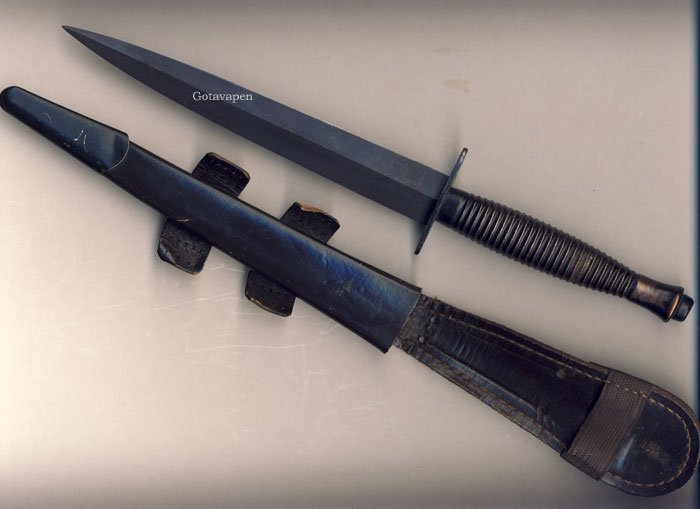
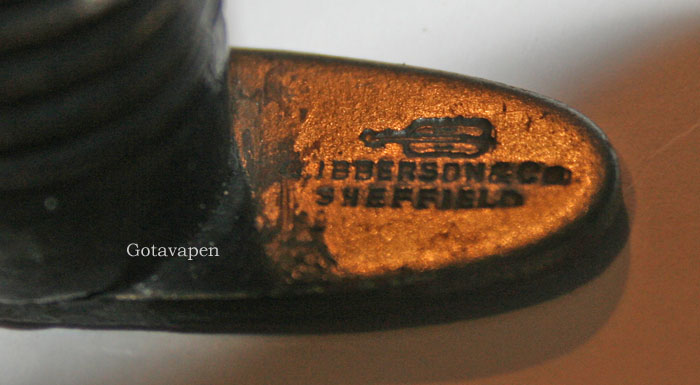
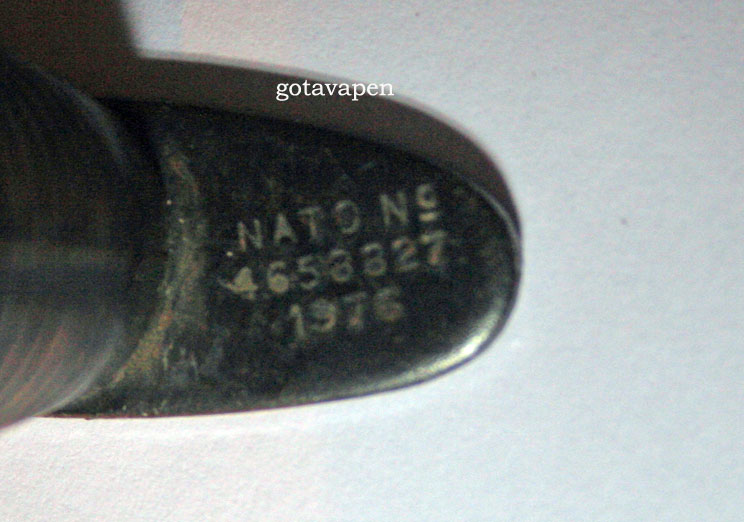
|
|
Royal Marine Commandos 2008.
|
|
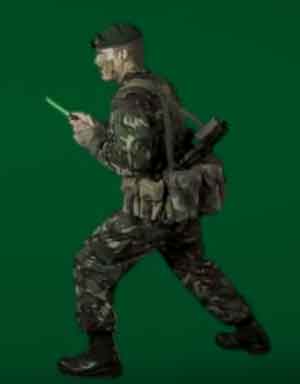 |

Royal Marine Commandos have used the commando knife Since their creation in
1942 until today.
|
|
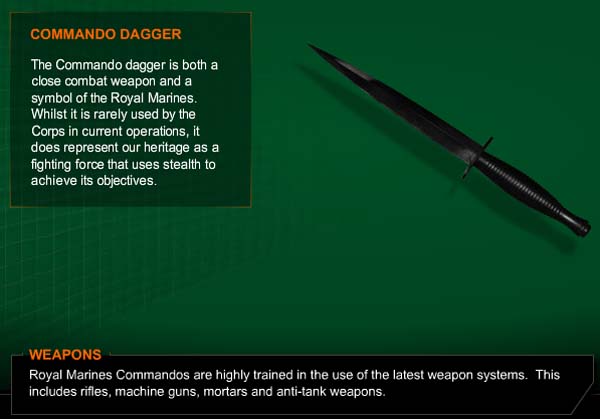 |
They say:
‘The Combat dagger is both a close combat weapon and a symbol of the Royal
Marines. Whilst it is rarely used by the corps in current operations, it
does represent our heritage as a fighting force that uses stealth to achieve
its objects.’ |
|
H.G. Long, Sheffield. |
|
H.G. Long
made different knives from 1846 to early 1990s.
They
have made many very beautiful specimens. They made many commemorative knives
after the war for the American Historical Foundation. |
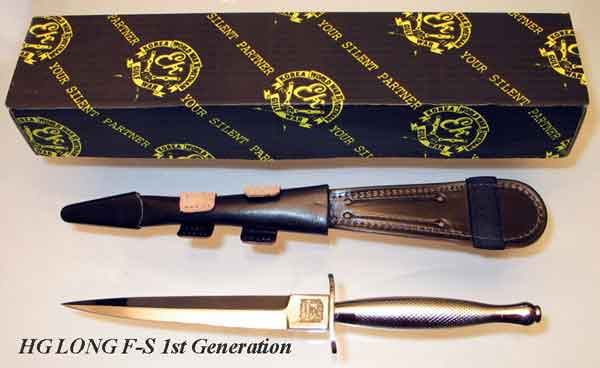 |
H.G. Long Commando knife
of the 1st
Pattern
Courtesy of Michigan knives |
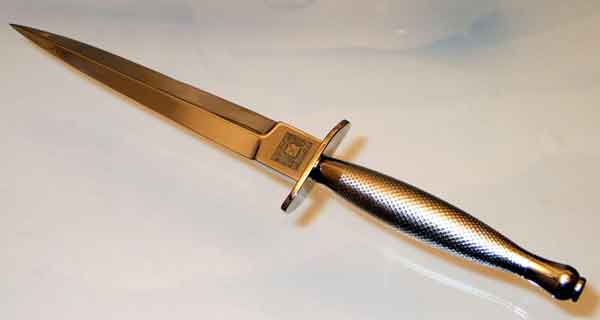 |
The knife pictured was made by EK in Richmond and sold to the Blackjack Knife
Co. in 1993.
Blackjack sold the EK stock in Blackjack boxes, but the knife was not made in
Effingham. |
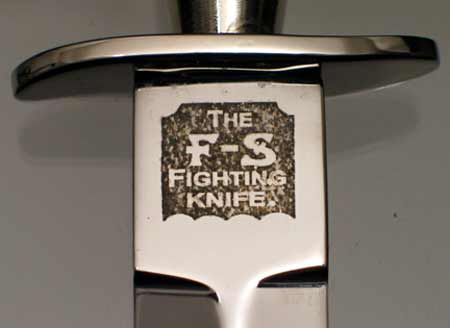 |
You
will find these H.G. Long Commando knives with the F-S mark on one side of
the ricasso
Courtesy
of Michigan knives
|
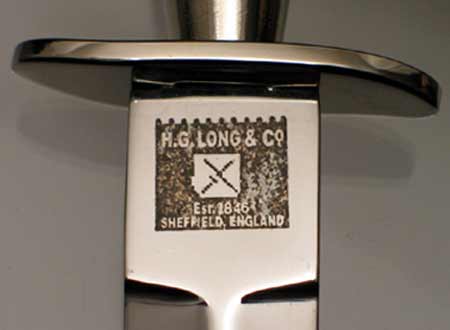 |
and the H.G. Long
logotype on the other side.
Courtesy of Michigan knives |
WKC
|
Weyersberg, Kirschbaum & Cie.
|
Weyersberg,
Kirschbaum & Co (WKC) purchased in November 2005,
the tools from Wilkinson
Sword Ltd. for production of various ceremonial swords,
including the
Commando Knife. |
|
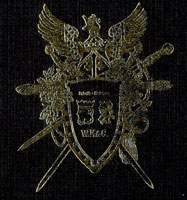 |
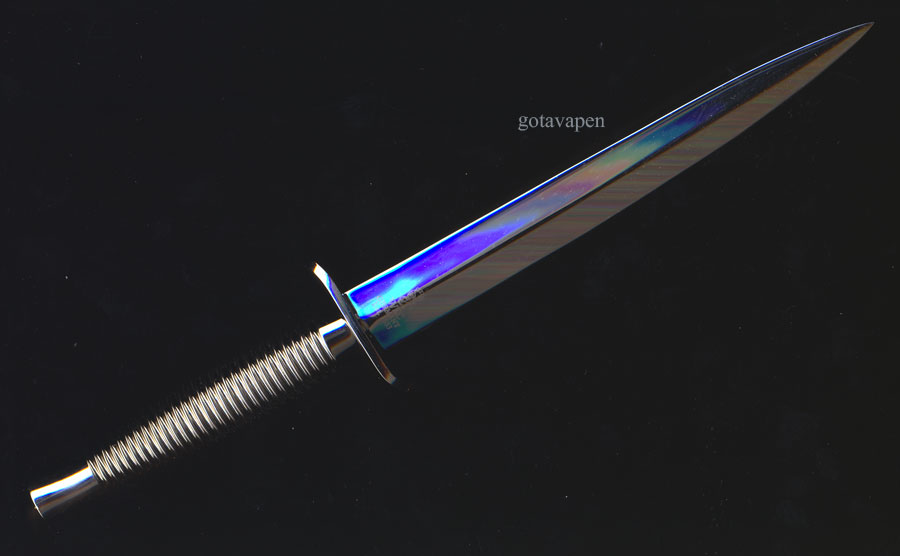 |
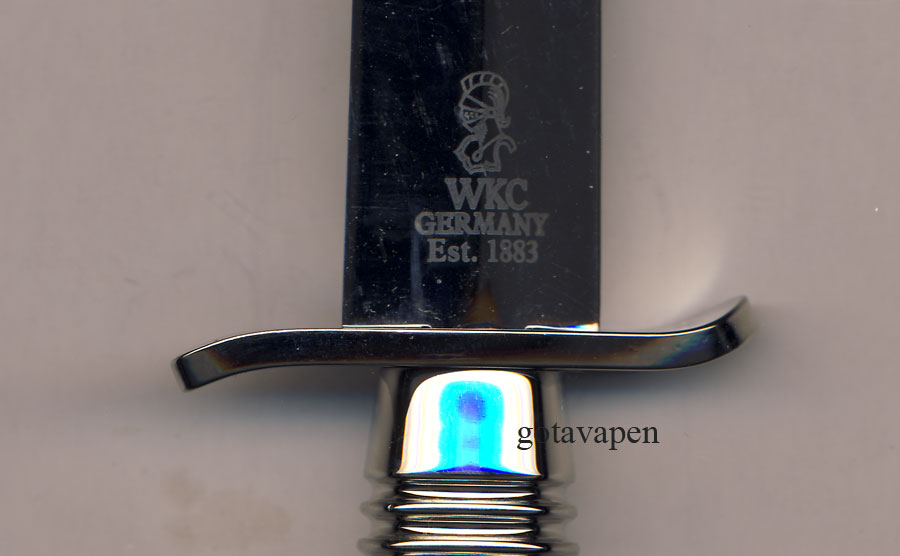 |
|
WKC
is nowadays offering a Commando knife with a 3rd type ringed
grip, their own type of blade (similar to 3rd Pattern), slotted
pommel nut and a wavy cross guard like the WSC 1st Pattern Knives.
|
[Top
of the page]
|
Commando knife for the French Legion. |
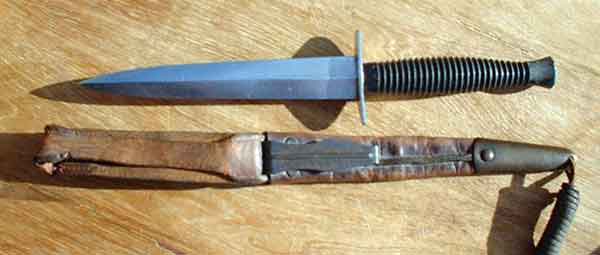 |
French
post-war Commando knife made for commercial sale and used by the French
Green Berets.
Note scabbard with clip. This knife is shorter than
Pattern 3. |
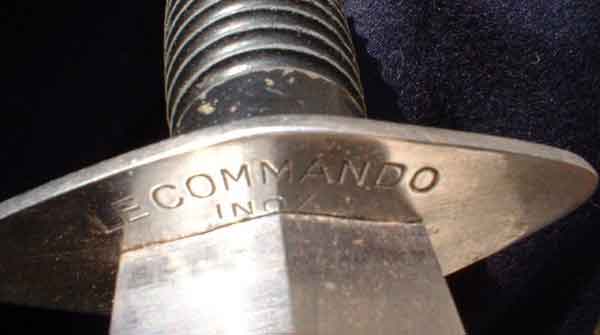 |
'LE COMMANDO - INOX'
(INOX stands for stainless.) |
READ MORE HERE ABOUT
HERE: KOPASSUS Commando knife
|
There are also plenty of cheap
copies of
the Commando knives; most of them are produced in the Far East
with inferior quality and finish. |
[Top
of the page]
[Top
of the page]
[Top
of the page]
References:
|
Robert Wilkinson Latham |
His own web
site |
|
Alan W. Locken |
Commando 1940 - 1945 |
|
Robert A. Burlein |
Allied Military Fightingknives |
|
Ron Flook
|
British and Commonwealth military knives. |
|
Fredrick J. Stephens |
Fighting Knives |
|
Frank Trzaska |
The O.S.S. Stiletto - Knife World February 1998. |
|
Frank Trzaska |
The Raider Stiletto - Knife World July 1997 |
|
Kelly Yeaton |
The First Commando Knives. |
|
John Nowhill & son |
Sheffield |
|
Michigan
knives |
|
|
Dr. William Windrum |
The earliest commando knivesAllan W. Locken – Commando
1940 - 1945. |

|































































